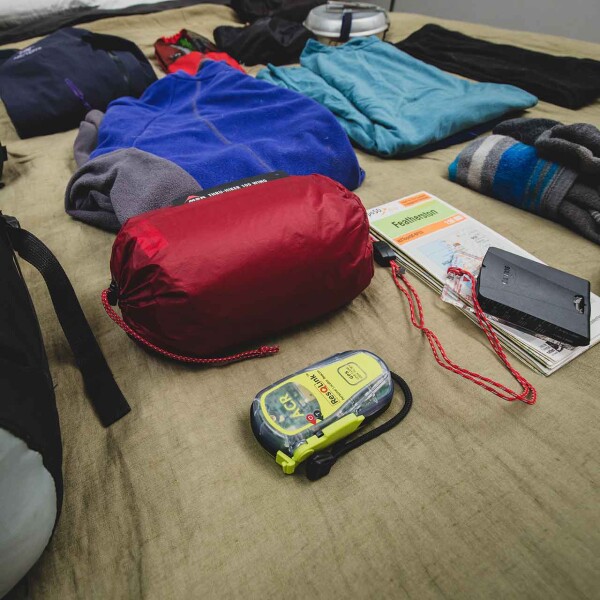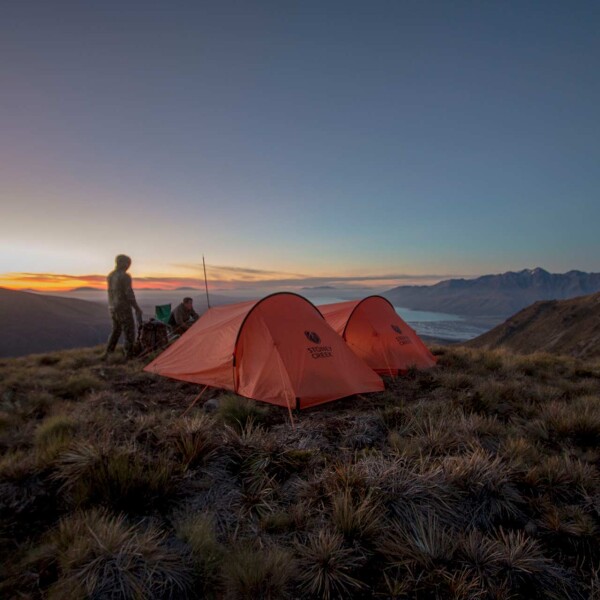Get Prepared for a Quake in the Outdoors
With active fault lines stretching almost the length of Aotearoa, a significant earthquake could hit at any time, even when you’re out adventuring. In the aftermath of a major shake, there may be no way out on your own and, with emergency services stretched, it might take a while for help to come.
Don’t panic! The chances of a quake while you’re away from civilization are relatively small and it’s likely you’re already doing the right emergency preparation as part of your routine trip planning. Just in case, here are some suggestions to help you prepare for and manage a quake situation.
Plan, Plan, Plan
As with any trip into the outdoors, you need to plan for an emergency situation. As well as the basics, there are a few extra things you can do in case of a quake.
Pack the Essentials
Take basic emergency gear on all your trips, including:
- Waterproof jacket
- Emergency shelter
- Warm layers, including a hat and gloves
- First aid kit
- Map and compass or GPS
- Extra food and water
- Survival kit (survival blanket, whistle and fire starters)
- Headtorch and spare batteries
- Emergency communication device.
The gold standard communication device in a quake situation is a two-way satellite messenger or radio, as many communications systems are likely to be down. Find out more about communication options here.
Stock Up Your Car
A large quake can leave roads severely damaged and impassable, so be prepared for an extended stay, even if you make it to your car. As well as a full tank of gas, have extra supplies in your car, including a sleeping bag, emergency shelter, cooking equipment and fuel, water, food, a full first aid kit, a radio, and a power bank for your phone.
Take a Water Purifying System
It’s likely you won’t have enough water with you for a longer-than-expected stay in the bush, and any water tanks and river water could be contaminated from the quake. As a safeguard, always carry a way to purify water, such as a water filter system or tablets.
On the track
Choose Your Campsite Carefully
When selecting a campsite for the night, consider the surrounding terrain with a quake in mind. Don’t pitch your tent near bluffs and cliff edges, under overhangs or near any large trees with dead branches.
When a quake strikes
Drop, Cover, Hold
If a quake hits, always follow the standard advice: Drop down on your hands and knees. Cover your head and neck. Where possible, hold on to something. Find more information on the Get Ready website.
Everyone Okay?
Once the shaking stops, check in with your group to make sure everyone is accounted for and that no one is injured. Regroup, keep calm and action a plan together. Discuss any decisions as a group and make sure everyone knows what they need to do.
Check Your Surroundings
While the original shaking may not cause immediate damage, the aftermath of rockfalls and landslides could pose the greatest danger. Check your surroundings to make sure you’re in a safe place. If there are bluffs or cliffs above you that could slide, move immediately to a safer spot.
In a Tsunami Zone?
If you’re walking a coastal track, be aware of the tsunami risk. If the shaking lasts longer than a minute or is strong enough to make it difficult to stand, move to higher ground as quickly as possible once the shaking has stopped. There’s more information about tsunamis on the Get Ready website.
Be Vigilant in Huts
If you’re in a hut, there are a few precautions to take, just as you would in your own home:
- Make sure the hut (or tent, if you’re camping) is not in the path of a potential rockslide or avalanche. If it is, evacuate the area immediately and set up an emergency shelter in a safer area.
- Turn off the gas. If you smell gas, or hear a blowing or hissing noise, open a window and evacuate the hut until the gas cylinder is turned off and the air is clear of any gas smell.
- Beware of broken glass, objects on the floor and articles stored overhead. Put your boots on and move any items that pose a tripping or falling hazard.
- Check the wood burner and flue. If there are signs of damage, don’t light a fire.
Make Contact
As soon as practicable, tell your emergency contact where you are and that you’re okay.
Get Help
If someone is injured or you can’t make it out without help, activate your emergency locator beacon or call for help if you can, using your emergency communication device. Be specific about your situation, including your location, the type of injuries and/or damage in the area, as the rescue coordination centre will be prioritising the most urgent calls.
Proceed With Caution
You may need to find shelter and stay put until help arrives. If it’s safe to make your way to your car, keep these safety measures in mind.
Beware of Active Slips
Landslides go hand in hand with earthquakes. DO NOT cross active slips. If a slip is still moving, it poses an extreme danger. The best approach is to navigate around the slip, by climbing to higher ground and making your way above it. If you’re stuck between two slips and you’re in a safe spot, call for help and be prepared to wait it out. If you’re in a group on a slope exposed to rockfall or an avalanche, spread out to reduce the risk of further rock movement and make your way as quickly as practical off the slip to stable ground.
Avoid Waterways
Earthquakes can turn soil to quicksand (liquefaction). Avoid riverbeds, beaches and lake edges.
Check Bridges
Before crossing any bridge, make sure it’s sound by checking anchor points for stability and cracking. If in doubt, look for a safe place to cross instead. If the river is too high to cross safety, be prepared to wait until it is.
Finally…
Once you’re back in civilisation, let your emergency contact know you’re safe and then report all damage to the track and huts to the Department of Conservation hotline.
What to do Next
Check out further information on emergenices and survival

